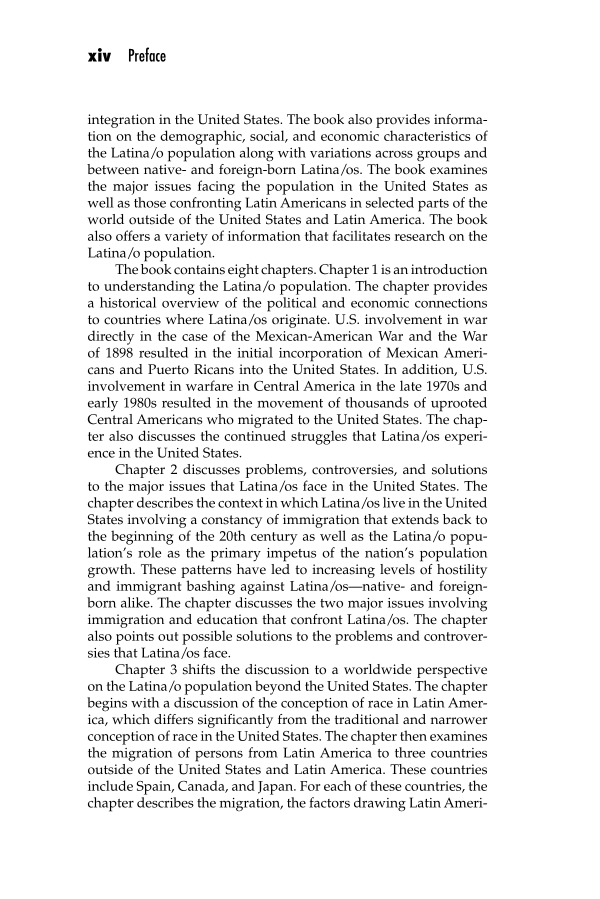xiv Preface integration in the United States. The book also provides informa- tion on the demographic, social, and economic characteristics of the Latina/o population along with variations across groups and between native- and foreign-born Latina/os. The book examines the major issues facing the population in the United States as well as those confronting Latin Americans in selected parts of the world outside of the United States and Latin America. The book also offers a variety of information that facilitates research on the Latina/o population. The book contains eight chapters. Chapter 1 is an introduction to understanding the Latina/o population. The chapter provides a historical overview of the political and economic connections to countries where Latina/os originate. U.S. involvement in war directly in the case of the Mexican-American War and the War of 1898 resulted in the initial incorporation of Mexican Ameri- cans and Puerto Ricans into the United States. In addition, U.S. involvement in warfare in Central America in the late 1970s and early 1980s resulted in the movement of thousands of uprooted Central Americans who migrated to the United States. The chap- ter also discusses the continued struggles that Latina/os experi- ence in the United States. Chapter 2 discusses problems, controversies, and solutions to the major issues that Latina/os face in the United States. The chapter describes the context in which Latina/os live in the United States involving a constancy of immigration that extends back to the beginning of the 20th century as well as the Latina/o popu- lation’s role as the primary impetus of the nation’s population growth. These patterns have led to increasing levels of hostility and immigrant bashing against Latina/os—native- and foreign- born alike. The chapter discusses the two major issues involving immigration and education that confront Latina/os. The chapter also points out possible solutions to the problems and controver- sies that Latina/os face. Chapter 3 shifts the discussion to a worldwide perspective on the Latina/o population beyond the United States. The chapter begins with a discussion of the conception of race in Latin Amer- ica, which differs significantly from the traditional and narrower conception of race in the United States. The chapter then examines the migration of persons from Latin America to three countries outside of the United States and Latin America. These countries include Spain, Canada, and Japan. For each of these countries, the chapter describes the migration, the factors drawing Latin Ameri-
Document Details My Account Print multiple pages
Print
You have printed 0 times in the last 24 hours.
Your print count will reset on at .
You may print 0 more time(s) before then.
You may print a maximum of 0 pages at a time.














































































































































































































































































































